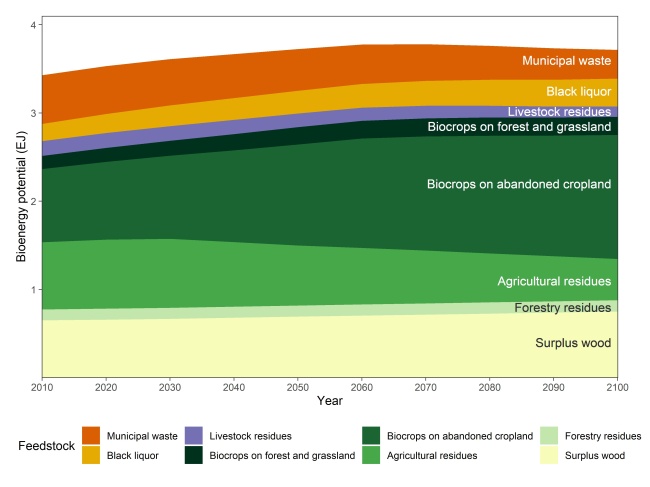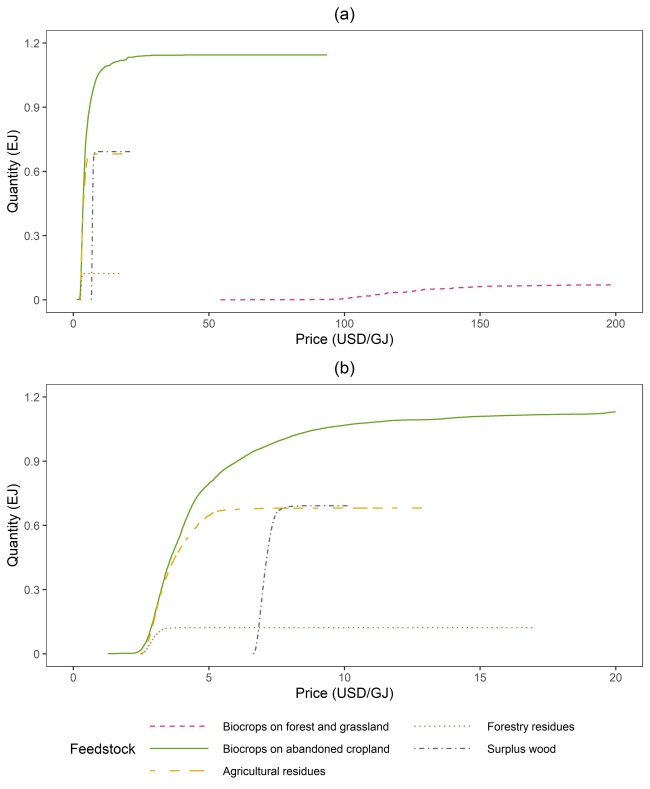Information of Paper
Author:Wenchao Wu, Tomoko Hasegawa, Shinichiro Fujimori, Kiyoshi Takahashi, Ken Oshiro
Year:2020
Journal:Renewable Energy, 162, 308-321
Link to the paper
Keywords
Bioenergy potential; Integrated assessment; Japan; Production costs
Abstract
Bioenergy could play an important role for Japan’s long-term mitigation strategy and energy supply but understanding of Japan’s domestic bioenergy supply capacity is limited. Here, we estimated Japan’s technical and economically feasible bioenergy potential throughout this century. We used an integrated assessment framework covering various feedstocks, with a gridded high-resolution land-use model and consideration of changes in population and cropland demand. Our results suggest that Japan’s total technical bioenergy could be 3.43 EJ/year to 3.78 EJ/year in the 21st century—17.3%–19.1% of the country’s current primary energy supply. Among feedstocks, dedicated bioenergy crops would be the greatest contributors, supplying 1.34 EJ/year in 2050 and 1.61 EJ/year in 2100, owing to the increasing availability of abandoned land.

Cost analysis revealed that about half the technical potential of land-based feedstocks could be produced at 5 USD/GJ. Potential maps showed that land-based biomass supply was located mainly in northeast, central, and southern Japan. Our assessment suggests that the bioenergy contribution to Japan’s energy supply and CO2 emission reduction could be larger than previously expected. Unlike under the current import-oriented development strategy, Japan’s domestic feedstock supply could be self-sufficient.





